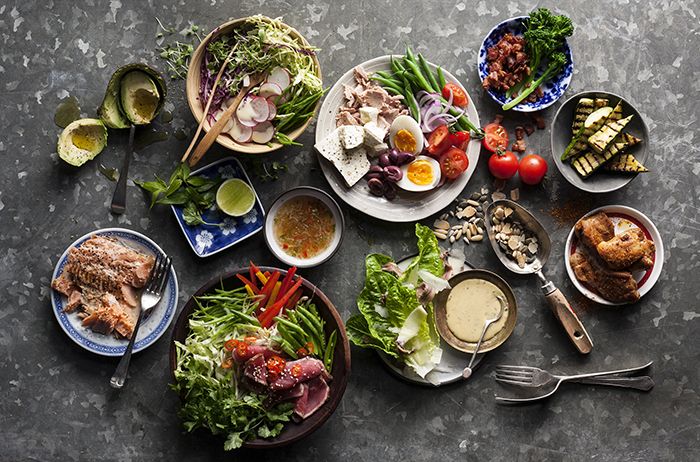Written by Sarah Peterson, of Perfect Keto Just like fashion, diet trends come and go. That doesn’t mean today’s popular diets aren’t effective, but it’s likely that in a few years (or maybe even sooner), we’ll be buzzing about a new way to eat. So, what about the current stars of the diet world, Keto and Banting? At first glance, many people think these two diets are identical. And while they share some similarities, the key differences between Keto and Banting might simply come down to your personal preferences. Curious to know more? Keep reading!
Keto vs. Banting
Banting and Keto Origins
Banting is a low-carbohydrate, high-fat diet that dates back to the late 1800s in England. It was introduced by William Banting, who successfully used the diet on himself, shedding 35 pounds in just 38 weeks—a pretty impressive result!
The Ketogenic (Keto) diet has a slightly more recent origin, emerging in the 1920s as a treatment for epilepsy and seizure control. Like Banting, Keto is also a low-carb, high-fat diet, but it’s known for being much stricter.

Banting and Keto Now
Both Banting and Keto diets share the same main goal: to highlight the benefits of consuming high-fat foods while cutting out carbs. However, both diets have been adjusted over time to fit modern lifestyles and eating habits. For example, alcohol consumption is now more restricted. William Banting, the founder of the Banting diet, enjoyed a fair amount of alcohol with his meals, but today’s drinking culture has changed significantly. A glass of dry white or red wine is generally acceptable on Banting, but alcohol can be counterproductive on Keto. If you’re curious about alcohol options, you might find Perfect Keto’s alcohol rules guide helpful.
Additionally, the modern Banting diet allows for more fat and dairy than William Banting’s original plan. Meanwhile, the Keto diet remains a highly individualized approach, tailored to specific needs, yet it still maintains its strict low-carb, high-fat guidelines.
The Issue of Fat
Jonno Proudfoot, Prof. Tim Noakes, and Sally-Ann Creed reshaped Banting into its modern form with their book, The Real Meal Revolution. Thanks to their efforts, both Keto and Banting diets have gained popularity, particularly in South Africa. They’ve also addressed a major misconception about high-fat diets: it’s not fat that leads to obesity, diabetes, heart issues, and other health problems. The real culprit? A high intake of carbohydrates. Among the three main macronutrients—protein, fat, and carbohydrates—only carbohydrates are non-essential for human survival and proper functioning.
Then there’s the cholesterol myth that needs debunking. Contrary to popular belief, the fat you eat doesn’t cause inflammation in your arteries—sugar and carbs do. Adopting a low-carb, high-fat diet like Banting isn’t just a diet; it’s a lifestyle change aimed at helping you live a healthier, more fulfilling life.
Keto and Banting Main Goals
When it comes to weight loss, both Keto and Banting work similarly. The primary goal is to achieve ketosis—a state where, due to low carb intake, your body burns fat for energy instead of glucose. This fat-burning process produces ketones, which your body uses as an alternative fuel source. Normally, your body gets its energy from glucose, found in sugars and carbs. However, when you consume more carbs than you need, your body stores the excess as fat, leaving you feeling hungry again. In ketosis, your body shifts to burning fat for energy, helping you stay fuller for longer.
Both Keto and Banting can help you reach ketosis, but it’s not essential to experience the many other benefits these diets offer. Beyond weight loss, low-carb, high-fat diets like Keto and Banting can improve overall well-being. They can enhance digestion, boost energy levels, improve sleep quality, and help maintain healthy blood pressure.
Keto vs. Banting Food and Beverages
The Keto food list is quite similar to the Banting one, but there are some key differences. If you check out a Keto-specific food and drink guide, you’ll notice a bit more freedom when it comes to drinking coffee, caffeinated teas, and enjoying certain high-fat dairy products like cheese. However, Keto followers need to be cautious with milk due to its sugar content. They should also avoid fruits like apples and stick to a more restricted food list, especially regarding vegetables. While Banting dieters can enjoy all veggies that grow above the ground, Keto dieters are limited to cauliflower, cabbage, avocado, broccoli, zucchini, spinach, asparagus, and kale. As for alcohol, Keto suggests avoiding it as much as possible, whereas Banting allows for an occasional glass of dry wine.
When you’re trying a low-carb, high-fat approach, all the “borderline” foods should be consumed in moderation. Whether you’re following Banting or Keto, strict adherence to the diet will yield similar results.
Overall, the differences between Keto and Banting are quite subtle. The real difference might be in the dieter’s mindset. If you’re looking to improve your overall well-being without the pressure of constantly maintaining ketosis, Banting might be the better choice. On the other hand, if you’re focused on weight loss through sustained ketosis and are ready to follow a strict eating and drinking routine, Keto could be more effective. Either way, both diets offer excellent long-term results.
It’s important to remember that cholesterol and other potential health risks are often associated with diets that are both high in carbs and high in fat. Opting for a high-carb, low-fat diet may reduce these risks since there’s less fat to adhere to inflamed arteries. Conversely, choosing a low-carb, high-fat diet can help you avoid the inflammation that causes artery blockages in the first place.
The key takeaway here is that you need to pick a side to stay healthy, fit, and full of energy.
For more info on Perfect Keto, check out their site. If you’re eager to start your journey to low-carb greatness, check this out.
By Sarah Peterson, Vp of Marketing at Perfect Keto



